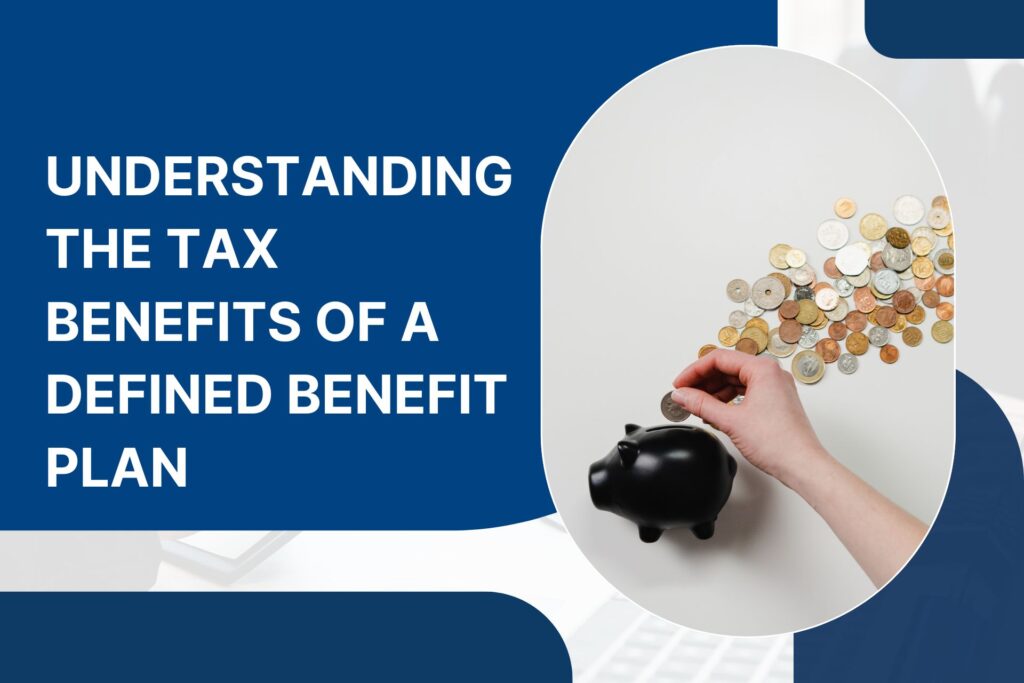Are you a business owner or high-income earner seeking ways to reduce your tax liability and save for retirement? If so, a defined benefit plan might be the solution you need. Unlike other retirement plans, a defined benefit plan offers significant tax advantages that can help you maximize your savings while lowering your tax bill. But what exactly is a defined benefit plan, and how does it work? In this article, we’ll take a closer look at this retirement plan and discuss the various tax benefits you can enjoy. From tax-deferred contributions to potential deductions and credits, understanding the tax advantages of a defined benefit plan can help you achieve your financial goals and secure your future. So, let’s dive in and explore the world of defined benefit plans and how they can benefit you.
What is a defined benefit plan?
A defined benefit plan is a retirement plan that promises a specific retirement benefit to its participants. In this case, it would be you as the business owner. The plan sponsor, typically an employer, is responsible for funding the plan and making sure that there are sufficient assets to pay the promised benefits. In contrast to a defined contribution plan, such as a 401(k) or IRA, where the benefit is based on the amount of contributions and investment returns, the benefit in a defined benefit plan is based on a formula that takes into account factors such as salary and years of service.
Tax benefits of a defined benefit plan
One of the primary advantages of a defined benefit plan is the tax benefits it offers. By contributing to a defined benefit plan, you can reduce your current taxable income and defer taxes on investment earnings until you withdraw the money at retirement. Here are some of the key tax benefits of a defined benefit plan:
Tax deductions for contributions to a defined benefit plan
Contributions to a defined benefit plan are tax-deductible, which means that you can reduce your current taxable income by the amount of your contribution. For example, if you contribute $150,000 to your defined benefit plan this year, you can deduct $150,000 from your taxable income, reducing your tax bill. This can be especially beneficial for high-income earners who are in a high tax bracket.
Tax-deferred growth of a defined benefit plan
Another advantage of a defined benefit plan is the tax-deferred growth of your investments. Unlike taxable investment accounts, where you pay taxes on investment gains each year, the investment earnings in a defined benefit plan are not taxed until you withdraw the money at retirement. This allows your investments to grow faster, as you are not paying taxes on the gains each year.
Tax advantages for business owners and high earners
Defined benefit plans can be especially beneficial for business owners and high-income earners. Because the contribution limits are based on a formula that takes into account factors such as salary and years of service, you can contribute much more to a defined benefit plan than to a defined contribution plan. This can be especially helpful if you are behind on your retirement savings and need to catch up quickly. Use our one of a kind defined benefit plan calculator to determine the contribution amount.
Calculating the tax savings of a defined benefit plan
To determine the tax savings of a defined benefit plan, you need to calculate how much you can contribute to the plan and how much that will reduce your taxable income. The contribution limits for a defined benefit plan are based on a formula that takes into account factors such as age, compensation, and years of service. Your plan administrator can help you calculate your contribution limit and estimated tax savings.
For example, let’s say that you are a 50-year-old business owner with a salary of $300,000 and 20 years of service. Based on the formula, your contribution limit for the year would be $150,000. If you contribute the full amount, you can deduct $150,000 from your taxable income, reducing your tax bill. The actual tax savings will depend on your tax bracket and other factors, but it can be significant.
How to set up a defined benefit plan for your business
If you are a business owner, you may be able to set up a defined benefit plan for yourself and your employees. You can read our detailed article on How to setup a defined benefit plan. You would also need to hire a third party administrator and you can read about it in detail here
Working with a defined benefit plan administrator to maximize tax benefits
To maximize the tax benefits of a defined benefit plan, it’s important to work with a third party administrator who understands the intricacies of the plan. Your TPA can help you design a plan that takes into account your unique financial situation and goals, and can help you monitor the plan over time to ensure that it continues to meet your needs. Feel free to reach out to us at info@pensiondeductions.com as we are one of the premier administrators of defined benefit plans.
Conclusion
A defined benefit plan can be a powerful tool for reducing your tax liability and maximizing your retirement savings. By taking advantage of the various tax benefits of a defined benefit plan, you can reduce your current taxable income, defer taxes on investment earnings, and potentially save thousands of dollars in taxes each year. If you are a business owner or high-income earner, it’s worth exploring whether a defined benefit plan is right for you. With the help of a financial advisor, you can design a plan that meets your needs and helps you achieve your financial goals.


